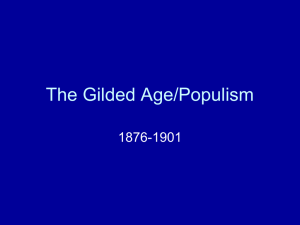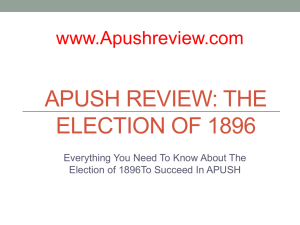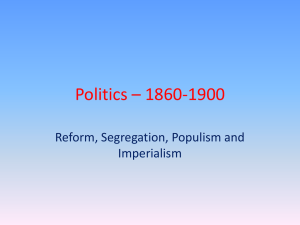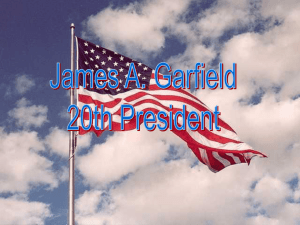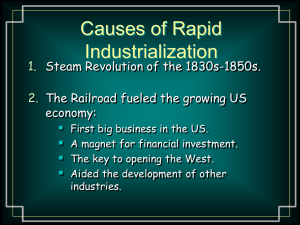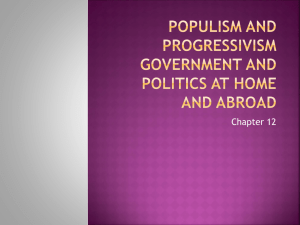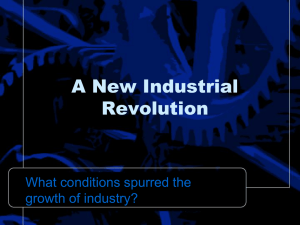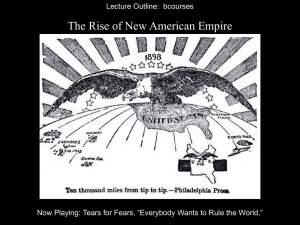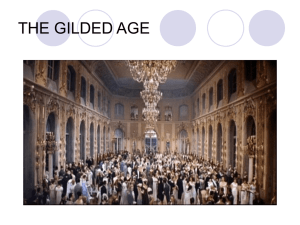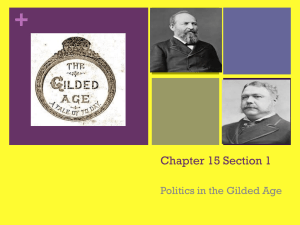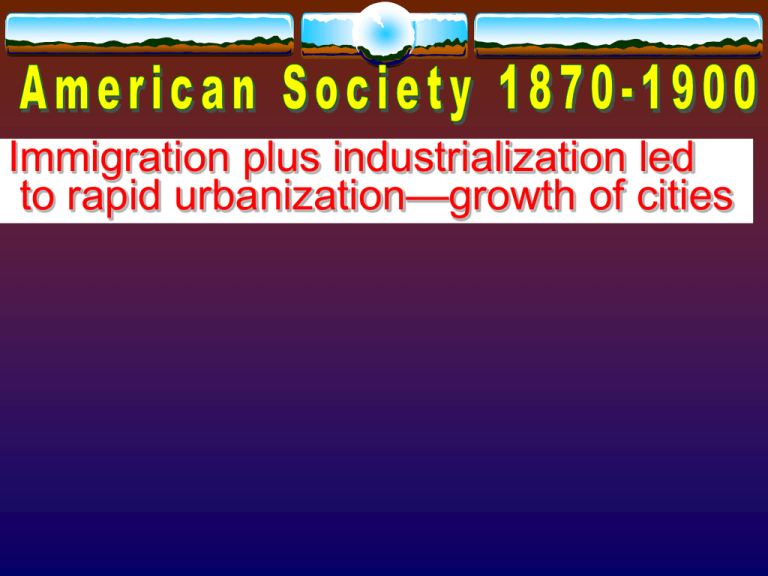
Immigration plus industrialization led
to rapid urbanization—growth of cities
1920 census:
1921: 51.4% of
Americans lived in cities
of 2,500 or more
New York City:
3 million in 1900
5.6 million in 1920
Chicago: 1 million in 1900
3 million in 1920
Cities:
Cheapest & most
convenient places to live
Jobs for unskilled laborers
in mills and factories
Provided social support of other
immigrant families
1890, more Irish in NYC than in
Dublin, Ireland; world’s largest
Polish population in Chicago, IL
Immigration changes population
1861: immigrants: 20% of increase
1881-1885: just short of 50% of increase
1906-1910: 60% of population increase
1916-1920: decline
a. World War I
b. Great flu epidemic
c. Spanish American War
d. Chinese Exclusion Act
e. Red Scare following W W I
Agricultural inventions reduced need
for labor on farms
Many farm workers moved to cities
for industrial jobs
Included several African Americans
moving from the South—200,000
between 1890 and 1910 to escape
racial violence, economic hardship
and political oppression
Frederick Law Olmstead and
Calvert Vaux
Antidote to congestion of the city
landscape
N. Y. Metropolitan Museum
Of Art
Daniel Burnham and
The Great White City
Chicago’s
Columbian
Exposition—1893
Row houses—single family dwellings
for working class
Immigrants lived in dumbbell tenements—overcrowded and unsanitary
Garbage/trash collection
was infrequent and
people dumped on street
or in building air shafts
causing rats, filth and disease.
Jacob Riis
How the
Other Half
Lives (1910)
Transportation:
Mass transit
First electric streetcar line in
Richmond, VA in 1888
Cable cars in San Francisco 1873
Subway in Boston in 1897
Elisha Otis
Louis Sullivan
Fire prevention and fighting
Building materials changed from
wood to steel and brick
1853—Cincinnati, OH—first paid
fire department
Great fires:
Chicago (Oct 8, 1871)
San Francisco (earthquake)
April 18, 1906
Chicago: 29 hours, 300 deaths,
3 square miles, 100,000 homeless,
17,500 buildings, $200 million
San Francisco: 4 days, 478 deaths,
5 square miles, 250,000 homeless,
28,000 buildings, $500 million
Water—challenge to supply safe, fresh
water to people in cities
1840s-1850s, New York
and Cleveland built public
waterworks
Still, little indoor plumbing—
faucets on streets; lugged to
apartments
1893—chlorination; 1908—filtration
Thomas
Crapper—but
did not solve
the sanitation
problem as long
as sewage
poured into
open ditches
or streams
Social Gospel: linking religion to improving
society, particularly relief to the poor.
Example: The Salvation Army
Limited relief, however;
Tensions between Protestants
and Catholics over religious
doctrine and standards of
morality
Restrict aid to “deserving
poor”
Too much assistance would
breed dependency; poverty due to laziness or
alcoholism
Reform via Settlement Houses
Community centers in slums that
that provided help and friendship
Middle class, college educated women
Jane Addams—
Hull House in Chicago
Solving neighborhood
problems
Antiwar & racial justice
activist; Nobel Peace Prize
1931
Murder rate in late 19th century
1880: 25 per million; 100 per million
Evolution of political machines
Organization controlling activities of
one political party in cities
Services to voters and business in
exchange for votes or money
City boss; ward bosses; precinct
captains and workers
City boss’s power: control of
thousands of jobs, including police,
firefighters, sanitation & influence
over courts and licenses
Political machines sympathetic to
immigrants—jobs, citizenship, housing,
political protection in exchange for
votes
Some machines turned to fraud
Dogs, children, dead people voting
Kickbacks on municipal contracts—
workers turn in bill higher than
actual cost & “kick back” a portion
of earnings
Tammany Hall
New York City Democratic machine,
1869-1871
William Marcy “Boss”
Tweed & Tweed Ring—
pocketed $200 million
in kickbacks & payoffs.
Ridiculed by cartoonist
Thomas Nast in Harper’s
Weekly. Tweed eventually convicted.
Factors that made boss rule possible
Power of immigrant voters
Link between political organizations and the
wealthy, prominent citizens who profited from
their dealings
Structural weaknesses of city governments
Boss: invisible government—alternative to
inadequate municipal government
Shopping
First shopping center:
Cleveland, OH, 1890
First department store: Marshall Field
in Chicago in 1865. “Give the lady
what she wants.” Allowed people to
take merchandise home on approval.
F. W. Woolworth—The Five and Dime
Store and first chain store, 1870s
Mail-order catalogs
Montgomery Ward--1872
Sears Roebuck--1896
Richard Sears &
Alvah Roebuck
1910—10 million Americans
shopped by mail—enhanced
by RFD (Rural Free Delivery)
American Leisure
1889 saying: “Eight hours for work,
eight hours for rest, and eight hours
for what we will.”
Simon Patten
The Theory of Prosperity
The New Basis of Civilization
In modern, industrial societies, the
problems of scarcity had been
overcome. The new economics
would create enough wealth to satisfy needs and
American Leisure
Amusement parks—often built by
trolly-car companies seeking more
riders
Coney Island in NY
(first roller coaster 1884)
First Ferris Wheel:
Chicago World’s Fair 1893
Spectator sport of baseball
50 clubs by 1850
1869—Cincinnati Red Stockings
toured playing local teams
1876—National League
1901—American League
1903—First World Series—
Boston Pilgrims beat
Pittsburgh Pirates
Negro Leagues for African
Americans
Shoeless Joe
Jackson
Football: appealed to the
more elite segments of the
male population—originated
in colleges/universities
Rutgers v. Princeton, 1869
Dr. James Naismith
Spectator sport of boxing (prize
fighting)
Bare knuckles
Marquis of Queesnberry
rules
John L. Sullivan—1882
Gentleman Jim Corbett
used footwork (boxing
skill) to knock out
Sullivan in 21st round in
1892
Live theater—Sarah Bernhardt,
Lillie Langtry, and Jenny Lind
Vaudeville—songs, dancing,
slapstick comedy, chorus lines
Circus: P. T. Barnum
& Anthony Bailey
The Greatest Show
On Earth
Ragtime music: Scott Joplin
Motion pictures
10-minutes; 1 reel
The Great Train Robbery
1903—told a story
D. W. Griffith’s epic
The Birth of a Nation
1915—3 hours but
Inflamed racial prejudice
Mass Circulation Newspapers
Sensational headlines and
promotional stunts
(Nellie Bly, New York World)
Joseph Pulitzer—
pioneered Sunday
editions, sports pages,
comics, women’s news
“Sin, sex, and sensation”
Mass Circulation Newspapers
William Randolph Hearst
Yellow journalism—
exaggerated tales of
Spanish cruelty. Also
personal scandals,
hypnotism, and an
imaginary conquest
of Mars
Leaders: political mediocrities
Rigid stalemate
Both major parties: strength and stability
But: Federal government did relatively little
of importance
Politics: not national; rather based on
broad regional, ethnic or religious
sentiments
Party system: 16 solidly Republican states
14 solidly Democratic (South)
5 “Swing” States
A period of GOP presidents (all but Cleveland)
Popular vote separation: 1.5% or less
GOP: Senate (treaties, Supreme Court justices
political appointments)
Democrats: House of Representatives
(Money bills)
Voter turnout: 78% of those eligible to vote
60-80% for off year or local elections
CA Primary 2006: 28%; General: 37%
Party Loyalty:
Democrats
Southerners (the Solid South)
Catholics
Immigrants
Poorer workers
Temperance; pro-immigration
Republicans
Northern Protestants
Old stock citizens
More nativist (anti-immigation)
Federal government:
Deliver mail
Maintain a military
Conduct foreign policy
Collect tariffs and taxes
Administer Civil War pensions
For Civil War veterans who had retired
or for widows and children
At peak: majority of elderly Northern
male citizens
Corrupt
Reform of Spoils System
Patronage (giving of government jobs
to those who helped candidates get
elected) out of control
Many not qualified for positions
Some used positions for personal gain
Reformers pushed for a merit system
Enraged GOP Sen. Roscoe
Conkling and his supporters,
the Stalwarts.
Half-Breeds: James G. Blaine
Both competed for control of the
GOP; but neither much interested
in political change—simply wanted
more power and patronage
Rutherford B. Hayes (Republican or G.O.P)
Named independents to
cabinet
One member fired clerks
who had no work to do
Commission to investigate
customhouses. Hayes fired two top
officials of NYC customhouse.
James A. Garfield
Hayes chose not to run
in 1880
GOP Convention floor fight
between Stalwarts
(opposing spoils reform) and two
groups of reformers: Mugwumps
(civil service reform) & Half-Breeds
(reform but still loyal to party)
Garfield a compromise candidate
James A. Garfield
Garfield ties to reformers
Conkling supporter, Chester A. Arthur,
named VP candidate
Arthur had been one of
two NYC customhouse
officials fired by Hayes
Garfield defeated Battle of
Gettysburg hero Winfield S. Hancock
Garfield defeated Battle of Gettysburg hero
Winfield S. Hancock
Garfield gave reform Republicans most
patronage jobs. Stalwarts furious
July 2, 1881, Garfield shot in
Washington, D.C. train station by
deranged Stalwart, Charles Guiteau,
whom Garfield had turned down
for a patronage job.
Garfield dies September 19, 1881
and Arthur becomes president
Arthur turned reformer as president
Urged Congress to enact
a civil service law
Pendleton Act of 1883—
bipartisan civil service
commission to make
appointments to federal
jobs through merit system
determined by an examination.
Caused politicians to court big
business for campaign contributions
1884, Arthur does not run; Democrat
Grover Cleveland defeated James G.
Blaine—first Democratic president
in 24 years
Supported lower tariffs
to bring down prices/
opposed by business/
industry.
Congress did not support
1888, Cleveland defeated by Indiana
Senator Benjamin Harrison
Harrison financed by big
business/industry
Cleveland won popular vote;
Harrison won electoral vote
During Harrison Administration,
Congress enacted McKinley Tariff Act
of 1890, raising tariffs to highest
level
Sherman Anti-Trust Act of 1890
Proposed by John Sherman,
Senator from Ohio
Outlawed trusts as
interfering with
free trade
Almost impossible
to enforce—law
was too vague and
Supreme Court did not support
McKinley Tariff (October 1890)
Highest protective tariff in the
history of the U. S. up to that time
Republicans suffered a stunning
defeat in the 1890 off-year
elections
William McKinley
Cleveland elected again in 1892
Supported lowering tariffs,
but refused to sign the
Wilson-Gorman Tariff Act
because it required a
federal income tax.
After 10 days, Sundays excluded,
unsigned acts become law.
To help sum up, here is a key fact
from political history about which
you should be aware.
During the period of history we
have just studied, and up to today,
Republicans have been the party
of big business and have liked
high tariffs. High tariffs cause other countries to
place high tariffs on their exports making them
more expensive for Americans to buy; so
Americans will tend to buy American goods,
produced by big business. Continued
Because Democrats were the
party of the worker and, more
importantly in this case, the
farmer, they tended to dislike
high tariffs.
U. S. farmers have always tended
to produce more than Americans
can consume; so they export
many crops to other nations. If
our high tariffs cause other countries to increase
their tariffs, our farm products won’t sell as well
abroad. But, until 1913 when the 16th Amendment created a permanent income tax, tariffs
were the main source of income for the U.S.
Government.
Interstate Commerce Act of 1887
Attempt to regulate the
railroads
Clear: only Federal
Government could
regulate railroads
Banned discrimination in rates between long
and short hauls
RRs required to publish rate schedules and
file them with the government
All interstate rail rates had to be reasonable
and just
Created the Interstate Commerce Commission
Oliver H. Kelley and the Grange
Grange: elite system of initiation
and ritual; strict code of secrecy
Depression of 1873: major decline
in farm prices; South and Midwest
were strongest regions
Granger Laws:
Reforms attempting to bring railroads under
more government control
State initiatives
Soon destroyed by courts; Grange lost prestige
Farmers’ Alliances
Successors to the Grange
South (Texas)
1880: Southern Alliance: >4 million members
Primarily concerned with local problems
Formed cooperatives and other marketing
mechanisms
Argued for a sense of mutual, neighborly
responsibility, enabling farmers to resist
oppressive outside factors
Mary E. Lease
Fiery populist orator
Denounced banks, railroads and
middlemen
“Raise less corn and more hell!”
Women also argued that sobriety
was the key to stability in rural
society
Ocala Demands
1889—loose merger of Southern and NW
Alliances
National convention in Ocala, FL
Party Platform for the Alliances
1890 Off-year elections:
Alliance candidates won partial or
complete control of 12 state legislatures,
6 governorships, 3 U. S. Senate seats,
50 House seats
But many simply Democrats
Populists (People’s Party)
Tom Watson of GA Leonidas L. Polk of NC
Populists (People’s Party)
1892 Election
Nominated James B. Weaver of Iowa
Populist Reform Demands
•Government warehouses—farmers deposit
crops as collateral for borrowing money from
the government at low interest rates
•Abolition of national banks
•End of absentee ownership of land
•Direct election of U. S. Senators
•Government ownership & regulation of
railroads, telephones and telegraphs
•Government-operated postal savings banks
•Graduated income tax
•Inflation of currency
The Panic of 1893
•March 1893: Philadelphia & Reading RR
Declared bankruptcy
•National Cordage Company failed in May
•Stock Market collapse
•Wave of bank failures
•Contraction of credit—many business failures
•Domino effect
The U. S. economy was heavily dependent on
the health of the railroads—nation’s most
powerful corporate institutions
Coxey’s Army
Jacob S. Coxey—advocated massive
public works program to create jobs
for the unemployed and currency
inflation
No progress in
Congress
Led a march of the
unemployed to
Washington
Armed police
barred from capitol
Coxey arrested
Bimetalism: most of its existence, U. S. had
recognized both gold and silver as backing
for currency
Crime of 1873:
•1870s: 16 oz of silver = 1 oz of gold
•Silver used more for jewelry than for coins;
•Mints stopped coining silver
•1873: Congress—officially discontinued silver
coins
•Value of silver fell below 16:1; many felt a
conspiracy of big bankers; demanded a
return, at once, to free silver and unlimited
coinage of silver at 16:1
Sherman Silver Act of 1890
Nation’s gold reserves were dropping
The Act required the Government to purchase
but not coin silver and pay for it in gold
Congress repealed based on a request from
President Cleveland
Bitter and divisive battle; split in Democratic
Party
Southern and Western Democrats—alliance
against Cleveland and Easterners
William McKinley: GOP candidate
for president in 1896
Opposed free coinage of silver
except by agreement with leading
commercial nations
William Jennings Bryan
Democratic National Convention
Western & Southern delegates
determined to seize control
Wanted a pro-silver candidate
Majority Report: Westerners and Southerners:
tariff reduction, income tax
stricter control of railroads
and trusts, and free silver
Minority Report: Easterners:
Echoed GOP platform
(opposed free coinage of
silver)
Bryan, the Great Commoner,
The Cross of Gold Speech
1896 Election: GOP $7 million; Democrats: $300,000
McKinley: front porch campaign
Bryan: 36 years old, first candidate to campaign among
the people; 18,000 miles; 5 million people
Campaign antagonized some in Democratic base
McKinley Administration:
Return to relative calm
Dissent exhausted
Labor unrest subsided
Politically shrewd and committed to
reassuring stability
Economic crisis gradually eased
Dingley Tariff
Currency (Gold Standard) Act o 1900

